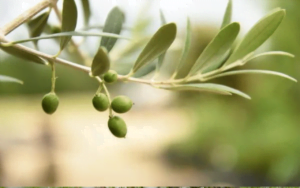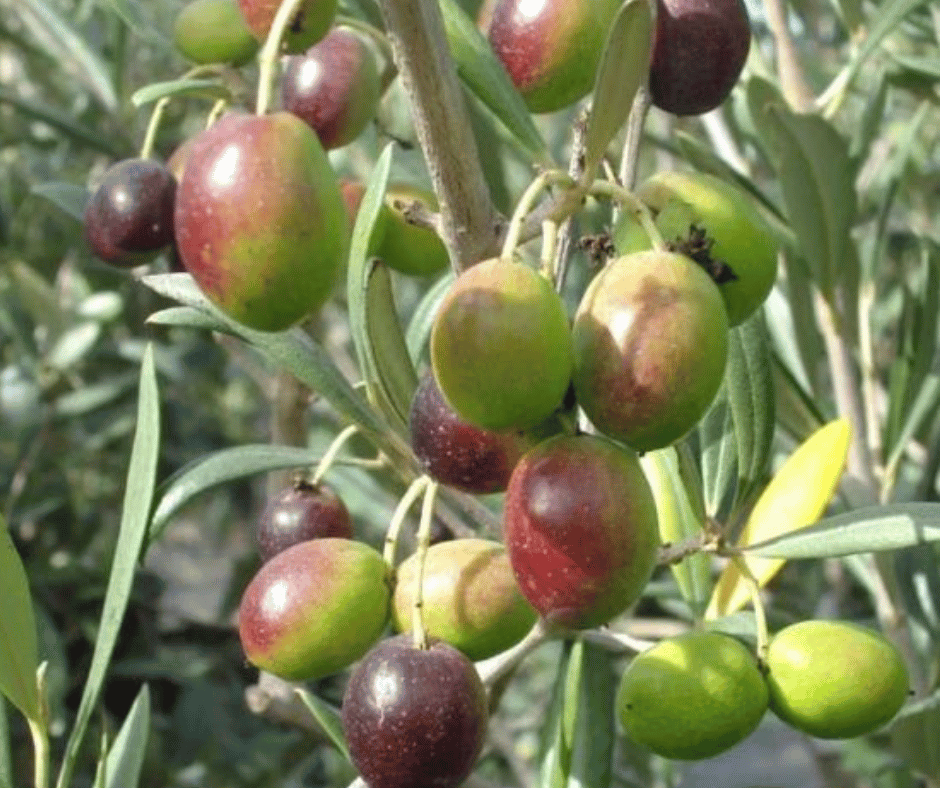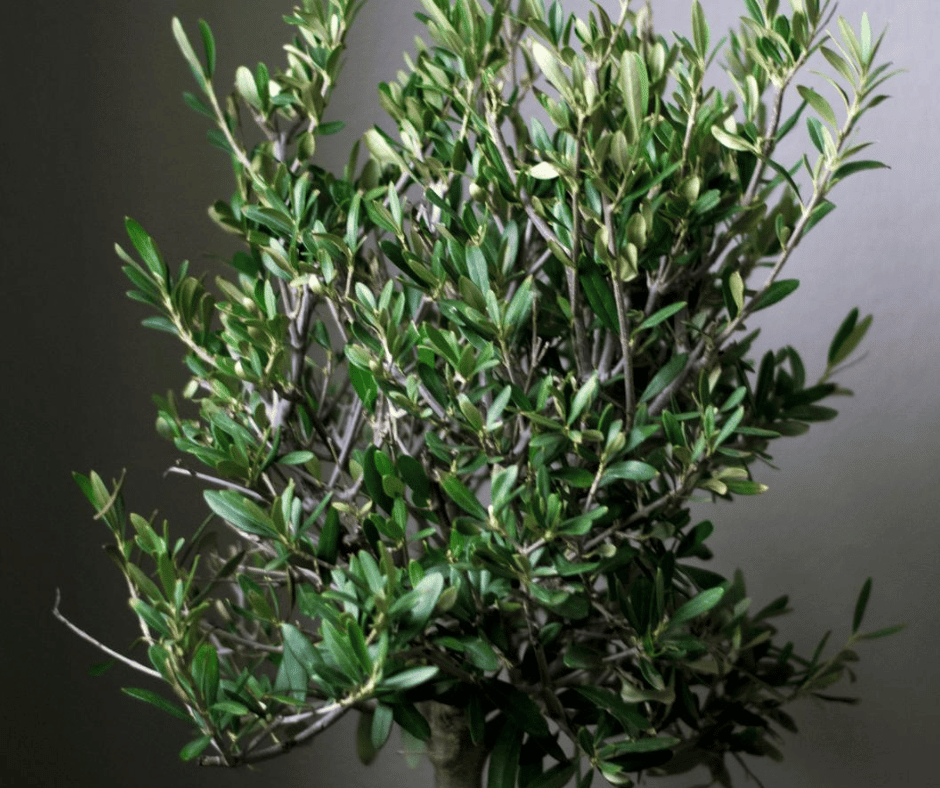Introduction
Olive trees, with their distinct Mediterranean charm, have transcended outdoor gardens, becoming coveted indoor plants. Their silver-green foliage and gnarled trunks exude a timeless elegance, bringing a piece of sun-drenched coasts into our homes. In this comprehensive review, we will delve into the intricate details of nurturing an indoor olive tree, ensuring its health and longevity.
The key specifications of the indoor olive tree:
| Specification | Details |
|---|---|
| Common Names | Olive Tree, European Olive |
| Botanical Name | Olea europaea |
| Family | Oleaceae |
| Plant Type | Evergreen Tree |
| Mature Size | Indoors: 6-10 ft tall, 2-3 ft wide (can be pruned to maintain size) |
| Sun Exposure | Full sun (at least 6 hours of direct sunlight); prefers south-facing windows |
| Soil Type | Well-draining, sandy loam; a mix of potting soil, perlite, and sand is ideal |
| Soil pH | Slightly acidic to neutral (6.0-7.5) |
| Bloom Time | Spring (Indoor blooming is rare but possible with proper care) |
| Flower Color | Creamy white; however, flowers are small and not the main attraction |
| Hardiness Zones | USDA zones 8-11 (for outdoor planting); adaptable indoors in other zones |
| Native Area | Mediterranean Basin |
| Benefit | Air purifying, non-toxic to pets, adds a touch of Mediterranean elegance, potential to produce olives |
Each section of this table provides detailed insights into the specific aspects of an indoor olive tree, from its basic identification like common and botanical names to its growth requirements such as sun exposure, soil type, and pH. The table also highlights the tree’s blooming characteristics, hardiness, native area, and benefits, offering a comprehensive overview for anyone interested in cultivating this plant indoors.
Embarking on a Green Journey
As we embark on this green journey, we focus on providing practical, detailed advice for every aspect of care. From optimal lighting to precise watering techniques, this guide is tailored for both the novice and the seasoned indoor gardener. Let’s unravel the secrets to transforming your living space with the serene beauty of the olive tree.
Plant Care
Caring for an indoor olive tree requires a blend of attentiveness and understanding of its native environment. This section breaks down the essential elements of plant care, ensuring your olive tree thrives indoors.
Light Requirements
Olive trees bask in sunlight. Indoors, they prefer a south-facing window where they can enjoy at least 6 hours of direct sunlight daily. If natural light is insufficient, supplementing with grow lights can be a game-changer.
Soil Preferences
The ideal soil for olive trees is well-draining, yet rich in nutrients. A mix of potting soil, perlite, and sand achieves this balance, providing the roots with the perfect growth medium.
Watering Practices
Overwatering is a common pitfall. Olive trees prefer their soil to be dry between waterings. Employ the ‘soak and dry’ method, thoroughly watering the soil and then allowing it to dry out completely.
Temperature and Humidity Needs
Olive trees flourish in temperatures between 65-75°F (18-24°C). They tolerate low humidity levels, making them well-suited for indoor environments.
Fertilizing Your Olive Tree
A balanced, slow-release fertilizer applied in the growing season supports robust growth. Refrain from fertilizing in the dormant winter months.
Pruning Techniques
Pruning is essential for maintaining shape and promoting healthy growth. Annually trim back overgrown branches and remove any dead or diseased foliage.
Overwintering Strategies
During winter, reduce watering and keep the tree in a cool, but not cold, environment. This period of dormancy is crucial for the tree’s health.
Propagating Your Olive Tree
Propagation through cuttings is an exciting way to multiply your olive tree collection. Use healthy, young branches for the best results.
Continuing from the previous sections, let’s dive deeper into the world of indoor olive trees, exploring the various types, common pests and diseases, strategies to encourage blooming, and addressing common problems.
Types of Indoor Olive Trees
- Arbequina: This is a popular choice for indoor cultivation due to its compact size and adaptability. It’s known for its early fruit production and rich, flavorful olives.
- Picholine: This variety is often valued for its elegant, elongated leaves and the ability to thrive in indoor settings. Picholine olives are known for their crisp texture and nutty flavor.
- Koroneiki: Renowned for its high-quality oil, the Koroneiki is a robust variety that adapts well to container living. It features small leaves and a dense, bushy growth habit.
Each of these varieties offers a unique aesthetic and functional benefit, making the choice dependent on your personal preference and intended use.
Common Pests & Plant Diseases with Solutions
- Scale Insects: These pests can be identified by their small, brown, shell-like appearance on leaves and stems. Use insecticidal soap or neem oil for treatment.
- Olive Leaf Spot: This fungal disease causes dark spots on leaves, leading to defoliation. Improve air circulation and apply a fungicide if necessary.
- Root Rot: Overwatering can lead to this serious issue. Ensure proper drainage and let the soil dry out between waterings. Infected plants may need repotting with fresh soil.
Regular inspection and timely action are key in preventing and controlling these issues.
How to Get Your Olive Tree to Bloom
- Adequate Light: Ensure your tree receives enough sunlight, which is critical for flower developme
- Proper Fertilization: Use a balanced fertilizer during the growing season to provide necessary nutrients.
- Temperature Variation: Exposing your tree to cooler temperatures in the winter can stimulate blooming in the following season.
While indoor olive trees may not bloom as prolifically as their outdoor counterparts, these steps can increase your chances of witnessing their beautiful flowers.
Common Problems With Indoor Olive Trees
- Leaf Drop: Often caused by overwatering, underwatering, or a drastic change in the environment. Adjust your watering schedule and ensure the tree is not exposed to drafts or sudden temperature changes.
- Yellowing Leaves: This can be a sign of overwatering or nutrient deficiency. Ensure the soil is well-draining and consider a nutrient boost.
- Stunted Growth: Lack of light or nutrients can lead to this issue. Place your tree in a brighter spot and follow a regular fertilizing schedule.
Understanding and responding to these common problems will help you maintain a healthy and thriving olive tree.
In this comprehensive guide, we have covered every aspect of caring for an indoor olive tree, from basic care to troubleshooting common issues. With these detailed insights, you’re well-equipped to cultivate a thriving, beautiful olive tree, bringing a piece of the Mediterranean into your home. Remember, the key to success lies in mimicking the tree’s natural environment as closely as possible and responding promptly to any signs of distress.
Addressing Rapid Decline
If your olive tree shows signs of rapid decline, assess and adjust its care routine. Often, the issue lies in watering practices or light exposure.
The Olive Tree’s Essence: A Concluding Perspective
In this guide, we have explored the intricate details of nurturing an indoor olive tree. These timeless plants not only enhance our living spaces but also connect us to a larger, natural world. With the right care, your olive tree will thrive, symbolizing resilience and peace in your home.
Frequently Asked Questions
Decode the magic of gardens with our guide to Landscaping Styles Frequently Asked Questions.
- Repot every two to three years or when roots become pot-bound. Choose a container only slightly larger than the current one to prevent overwatering issues.
- Yes, with adequate light and care, indoor olive trees can bear fruit, although this is less common than with outdoor trees.
- Olive trees are non-toxic to cats and dogs, making them a safe choice for pet owners.
Common pests include scale insects and spider mites. Treat infestations early with insecticidal soap or neem oil.
Recent Posts
- Modern Mural Ideas Transforming Walls into Artworks
- Thematic Table Decor Dressing Your Table for Special Occasions
- Festive Lighting Ideas Brightening Your Home for the Holidays
- Biodegradable Decor Materials Choosing Earth-Friendly Options
- Personalized Space Decor Making Your Home Uniquely Yours
- New Year’s Eve Decor Ringing in the New Year in Style
- Transforming Junk into Decor Upcycling at Its Best
- Second-Life Decor Objects Giving Old Items New Purpose
- Unique Decoration Crafting Standout Ideas for Your Home
- Environmentally Friendly Styling Decor with a Conscience











